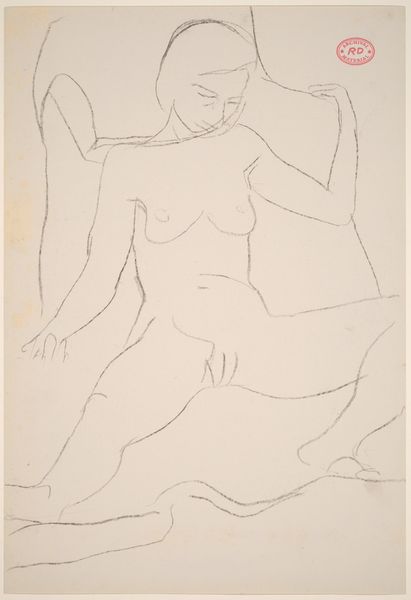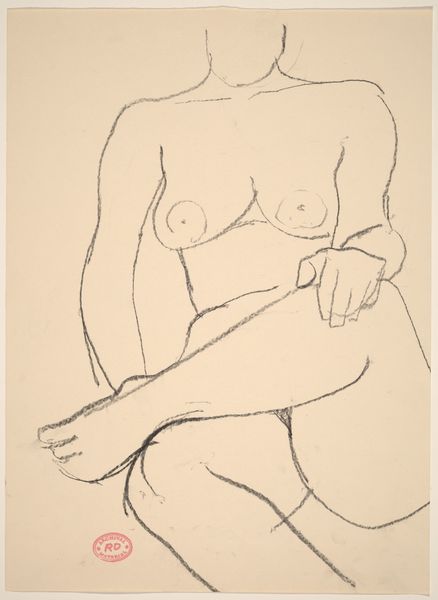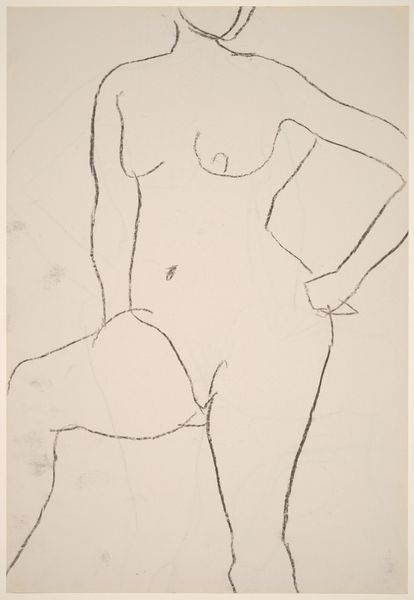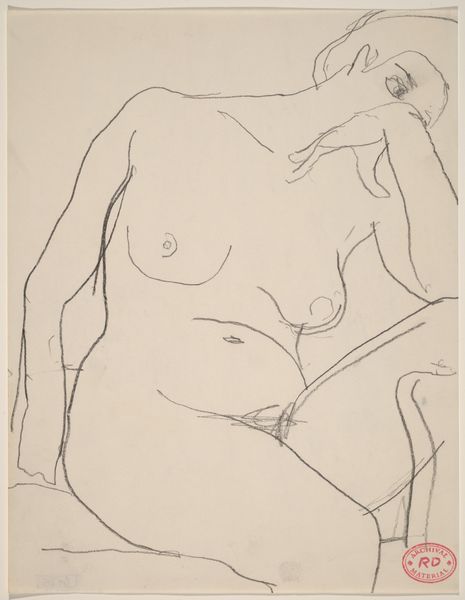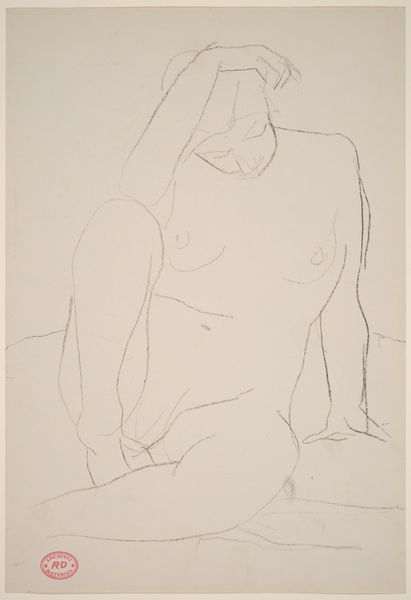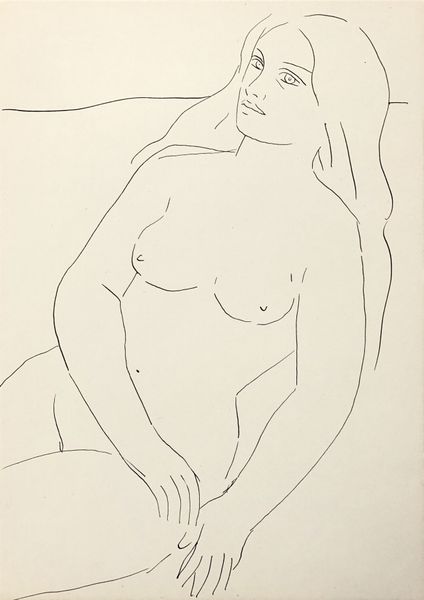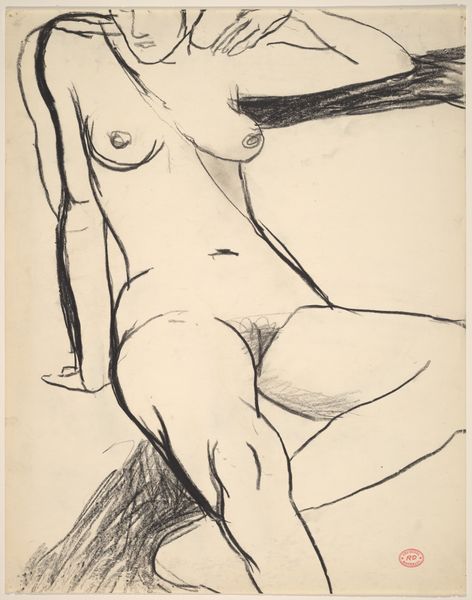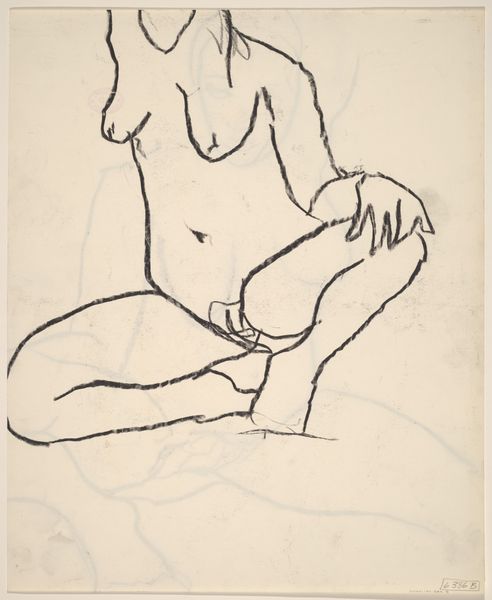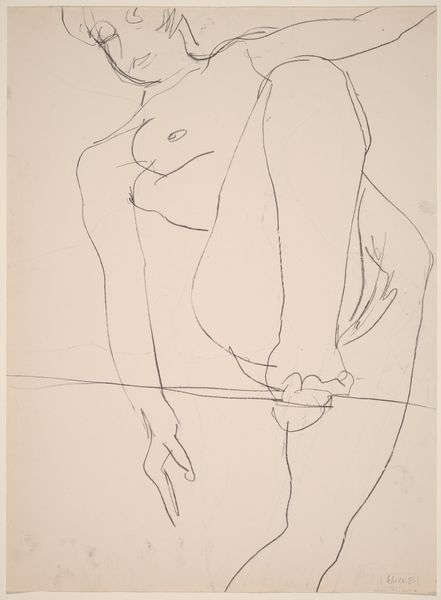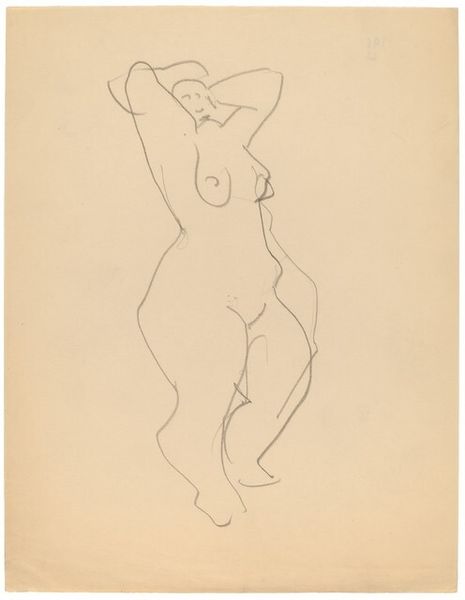![Untitled [seated female nude with legs apart] [verso] by Richard Diebenkorn](/_next/image?url=https%3A%2F%2Fd2w8kbdekdi1gv.cloudfront.net%2FeyJidWNrZXQiOiAiYXJ0ZXJhLWltYWdlcy1idWNrZXQiLCAia2V5IjogImFydHdvcmtzL2M3NWM0ZGVmLTBlZWMtNDJmZi1hNjk2LTk0YTkzNzY3ZGFjMS9jNzVjNGRlZi0wZWVjLTQyZmYtYTY5Ni05NGE5Mzc2N2RhYzFfZnVsbC5qcGciLCAiZWRpdHMiOiB7InJlc2l6ZSI6IHsid2lkdGgiOiAxOTIwLCAiaGVpZ2h0IjogMTkyMCwgImZpdCI6ICJpbnNpZGUifX19&w=3840&q=75)
Untitled [seated female nude with legs apart] [verso] 1955 - 1967
0:00
0:00
drawing, pencil
#
drawing
#
figuration
#
bay-area-figurative-movement
#
pencil drawing
#
pencil
#
nude
#
modernism
Dimensions: overall: 40.6 x 27.9 cm (16 x 11 in.)
Copyright: National Gallery of Art: CC0 1.0
Curator: This is Richard Diebenkorn's "Untitled [seated female nude with legs apart] [verso]", created between 1955 and 1967 using pencil on paper. Editor: My immediate reaction is one of intimacy, though also incompleteness. It feels like a fleeting moment captured, or perhaps a study for something larger. The open posture juxtaposes a vulnerability and strength that invites exploration beyond its raw and gestural materiality. Curator: The artist’s consistent use of the nude in his early figural work often intersected with the shifting landscape of female representation in mid-century America. It begs us to think, were these images simply personal exercises, or part of a larger cultural negotiation? Considering the gaze here, her somewhat averted expression, the drawing allows for a dialogue with contemporary feminist theory, asking about agency and objectification. Editor: Absolutely. But the very nature of a sketch, the lines themselves, speaks to an era grappling with new forms of expression and shifting artistic canons. Diebenkorn emerged from the Bay Area Figurative Movement that itself emerged from post-war Californian painting— the drawing might invite viewers to ponder how institutions, such as the art market or museums, affect artists’ freedom to produce work. The sketch seems removed from concerns with polish and saleability, an experiment, almost. Curator: Precisely. And this, for me, heightens its political nature. During that time, depicting the female form in such an informal way became a site of both personal and artistic negotiation—especially given societal constraints imposed by things like domesticity and conservative notions of sexuality on female identity during the period between the 1950's-1960's. The use of line seems intentional, highlighting contours that create a palpable sense of lived experience—this piece prompts many fascinating queries, about not just aesthetics, but socio-political context. Editor: It underscores how Diebenkorn explored traditional themes through his evolving relationship to representation. It really emphasizes the relationship between figure and medium. So raw, almost aggressive, in its simplicity. Considering his wider artistic trajectory really frames how Diebenkorn interacted with broader artistic movements like Abstract Expressionism. Curator: A fruitful reflection – viewing this drawing allows us not only an encounter with one artist's process but further expands a contemplation upon cultural conversations woven into both our artistic history, and present-day realities concerning identity and artistic agency. Editor: I agree. Ultimately, this drawing offers a small window into a moment of profound transition in American art and society, that keeps evolving with the passing of years.
Comments
No comments
Be the first to comment and join the conversation on the ultimate creative platform.
